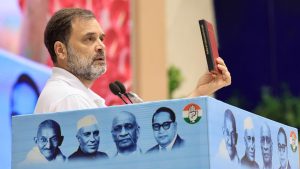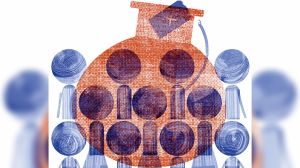‘Law needed to make it a must for firms to test veterinary drugs for vulture toxicity’
“The introduction of diclofenac led to the...decimation of these populations by up to 99.9% and now, only remnant wild populations of these Critically Endangered birds survive,” underscored the statement.
 The statement underlined that before veterinarians widely started administering diclofenac, an NSAID, to cattle as pain-killers in the 1990s, India had white-rumped vultures, Indian vultures, and slender-billed vultures in millions (Representive Image)
The statement underlined that before veterinarians widely started administering diclofenac, an NSAID, to cattle as pain-killers in the 1990s, India had white-rumped vultures, Indian vultures, and slender-billed vultures in millions (Representive Image)The government should enact a law that makes it mandatory for pharmaceutical companies to test veterinary drugs for vulture toxicity during the drug-development process itself so that the species could be protected from their potential harmful effects, according to a statement issued by the Bird Conservation Society of Gujarat (BCSG) during a national symposium organised in Ahmedabad.
Termed ‘A Call-to-Action’ statement, it was adopted unanimously by the experts present at the symposium, Bakul Trivedi, president of BCSG, told The Indian Express. The daylong symposium was held on Sunday.
By supporting the statement, the participants of the symposium urged the Central government to take administrative measures to prevent a further decline in the highly-depleted population of vultures. The statement called for making it mandatory for pharmaceutical companies to test and check whether any new non-steroidal anti-inflammatory drug (NSAID) they might be developing for treating livestock would be toxic for vultures or not.
“A new study published earlier this year examined the existing regulatory processes for veterinary drugs in Europe and South Asia and found them to be ineffective at protecting vultures and other wildlife. Such a consistent and precautionary approach is seen as the only way that India’s remaining vultures can be free from the threat of toxic NSAIDs,” according to the statement.
Wildlife biologist Vibhu Prakash, who, under the aegis of Bombay Natural History Society, headed the vulture conservation programme; Chris Bowden, advisor to Saving Asia’s Vultures from Extinction consortium and UK’s Royal Society for the Protection of Birds’ officer for globally threatened species; John Mollard, senior conservation scientist at the RSPB; Ankit Bilash Joshi, vulture conservation programme manager at Bird Conservation Nepal; Percy Avari, a Mumbai-based veterinarian who is also working for vulture conservation; and Abhijit Pawde, principal scientist and in-charge of centre for wildlife at Indian Veterinary Research Institute, Bareilly, were among the experts who delivered talks during the symposium. Nityanand Srivastava, chief conservator of forests (wildlife) and chief wildlife warden of Gujarat, also addressed the symposium, BCSG said.
The statement underlined that before veterinarians widely started administering diclofenac, an NSAID, to cattle as pain-killers in the 1990s, India had white-rumped vultures, Indian vultures, and slender-billed vultures in millions. “The introduction of diclofenac led to the…decimation of these populations by up to 99.9% and now, only remnant wild populations of these Critically Endangered birds survive,” underscored the statement.
The statement also referred to a research paper in American Economic Review, which estimated that the loss of vultures in South Asia caused 500,000 additional human deaths between 2000 and 2005, and an economic cost of nearly $70 billion per year. “Without vultures, cattle carcasses were left lying for long periods hence: a) incubating a host of potentially deadly bacteria and so acting as reservoirs of disease and b) leading to an increase in other scavengers such as rats and dogs, which as well as being less efficient at cleaning up the environment, cause other public health problems such as rabies,” the statement quoted the study as having concluded.
Nine species of vultures occur in India. They include WRV, IV or long-billed vulture, SBL, Egyptian vulture, read-headed or king vulture, Eurasian griffon or griffon vulture, Himalayan griffon or Himalayan vulture, and cinereous vulture. Of them, eight have been recorded in Gujarat.
Diclofenac’s veterinary use was banned in India in 2006 after experts identified it as the culprit of the historic collapse in vulture population in the country. Experts say that diclofenac, consumed by vultures by way of scavenging carcasses of cattle treated with that drug, causes kidney failures, leading to their deaths within days. In 2015, the government banned diclofenac with packaging larger than three millimetres (ml) after complaints that the drug meant for treating humans was being diverted for treating livestock.
Despite the diclofenac ban, new drugs continue to be a threat to the vultures, the statement said. “India is one of the signatories to the Convention on Migratory Species of Wild Animals (CMS) and the COP14 of the CMS this year adopted a resolution stating, ‘ensure that safety testing on vultures of new veterinary NSAIDs is made a mandatory part of the protocol of research and development and wholly financed by the pharmaceutical industry, making licensing conditional on the results of these tests.’ Thus, bringing in such a law is also a legal obligation for India,” Trivedi said.












